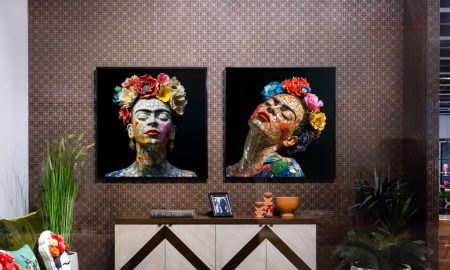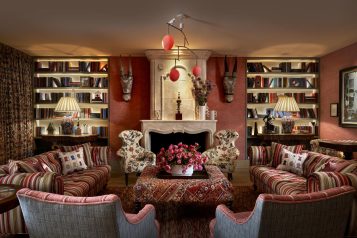By Warren Sheets
Throughout the past 100 years, our cultures have evolved, but so too have our expectations. This is particularly evident in the interiors of our homes. What used to be referred to as “interior decorating” now has been overshadowed by “interior design.” The term is splashed around very broadly amongst professionals, non-professionals, and the self-proclaimed alike. However, it is important to understand the distinct difference between the two designations.
The roots of an interior decorator can be traced to historic England, where those whom held the title of “decorator” were actually painters, albeit not the type of painter we think of today. These were individuals with talents that went beyond simply applying lacquer to the walls; they also provided exotic finishes like glazing, antiquing, faux wood graining, and faux stone finishes, in addition to providing and installing wall coverings. Some of the more entrepreneurial decorators eventually expanded their services and began providing advice about interior décor, helping their clientele locate custom-made furnishings.
This profession was absorbed by our American culture all the way until the 1950s, when the pervading architectural style began to transition from traditional to modern design. The role of the decorator began to transform as well. The title of “interior decorator” came into existence, and these gurus were generally retained by the country’s very affluent.
In the mid-’70s however, “interior decorator” evolved into a new profession that is now mostly referred to as “interior designer.” As more modern technologies began to be introduced into “homes of tomorrow,” architects were burdened with additional responsibilities. Many found themselves unable to dedicate the same time to a project as they had in the past. As a result, attention to detail, particularly in the interiors, began to lessen. As a whole, architects became more consumed with the exterior of a home and the project management of their consultants.
It was at this point that the field of interior architecture was born and was assumed by the role of the interior designer. In retrospect it was great for the industry; the interior designer worked with the architect as a dedicated consultant on the project, responsible for all aspects of the home’s interior.
Though some would argue that the field of interior design has grown to become more prevalent, interior decorators do still exist today. At Warren Sheets Design, we have many clients that do not require the complete services of an interior designer. In many cases, these clients have acquired a home with good architectural bones, and therefore only need to furnish and accessorize the space, with no need to address the interior architecture.
When someone asks me what we do at Warren Sheets Design, I tell them that when we assume the role of the interior designer we design and specify what happens on the floors, walls, and ceilings of a home along with designing the furnishings, artwork and accessories. Often times in our first meeting with an architect, he or she is pleased to learn that they can hand us a blank interior shell. This leaves the architect more time to spend on the exterior and project management aspects of the job.
We refer to all of these entities as a whole, as the “architectural backgrounds” of a home. This is the role of today’s interior designer.
As interior designers, we design and specify the flooring materials and layout, looking at how the flooring material goes together. If you decide to install a wood floor in one room and carpeting in another, and have not thought this out in advance, the thickness of the wood floor can be one-and-a-half inches more than the carpet. By not depressing the floor where wood is to be installed, you could end up with an unsightly and unnecessary elevation change. Or by not having the advantage of knowing in advance that you are going to use hand-made tile wainscot on bathroom walls, there is a very good chance that the thickness of the tile at the walls will protrude beyond that of the door casing.
We provide elevated drawings of every wall in a home, showing what materials are applied to each surface, whether it is wood wainscot, panel molding, hand-made tiles, or marble. We draw patterns indicating how the materials are laid together and specify the materials to be used. This detailed process goes beyond the walls-we even include the inside of showers.
During our process, we work with the project architect to adjust the floor plan as required, often adding niches or built-in bookcases. We also draw the designs for kitchen cabinets, butler’s pantries, fireplaces, and closet interiors-even the ceilings get a fair share of our attention, as we decide between soffits with indirect lighting, wood beams, barrel vaults, or crown moldings, of course paying special attention to the finish.
Lastly, we direct our attention to the many details of a home, designing fabulously articulated doors throughout the house, including the front entry door. We design base moldings, door casings, edge details for marble tops, staircases and stair railings, light fixtures, door hardware, and anything that attaches itself to the floor, walls, or ceilings.
We refer to all of these entities as a whole, as the “architectural backgrounds” of a home. This is the role of today’s interior designer. Sometimes we refer to this process as “interior architectural design,” which is why we also have a licensed architect as a member of our staff.
There is a great difference between an interior decorator and an interior designer. At our firm, we think of them as being responsible for two distinct yet complementing roles. This is why we provide both services. By fully addressing an interior from all aspects, and by developing a comprehensive set of drawings, our clients are able to visualize a complete picture of their interior before dollars are spent and mistakes are made. We do not believe in commencing work on a project until we, as well as our clients, know exactly what materials are being used on every surface, and the design is fully complete.
Designing your interior from the beginning to the end on paper is a very good way to assure the road to a fabulous interior-at least that is what our clients tell us!
Cheers,
Warren Sheets Design
1661 Mission St.
San Francisco, CA 94114
415.626.2320
www.warrensheetsdesign.com





















